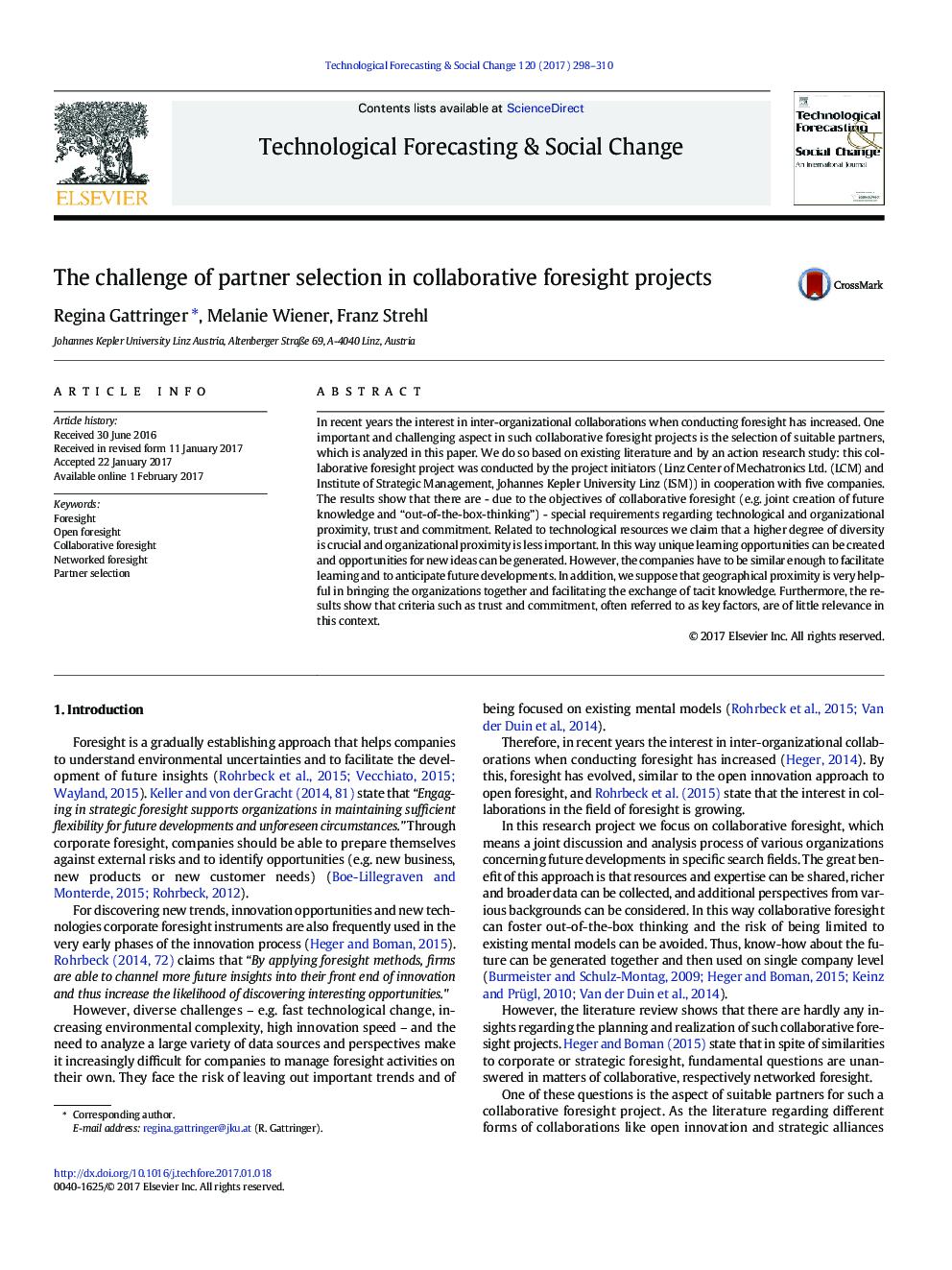| Article ID | Journal | Published Year | Pages | File Type |
|---|---|---|---|---|
| 5036789 | Technological Forecasting and Social Change | 2017 | 13 Pages |
â¢Technological proximity: a higher degree of diversity is crucial.â¢Organizational proximity is less important.â¢Geographical proximity facilitates the exchange of tacit future knowledge.â¢Criteria such as trust and commitment are of little relevance in this context.
In recent years the interest in inter-organizational collaborations when conducting foresight has increased. One important and challenging aspect in such collaborative foresight projects is the selection of suitable partners, which is analyzed in this paper. We do so based on existing literature and by an action research study: this collaborative foresight project was conducted by the project initiators (Linz Center of Mechatronics Ltd. (LCM) and Institute of Strategic Management, Johannes Kepler University Linz (ISM)) in cooperation with five companies. The results show that there are - due to the objectives of collaborative foresight (e.g. joint creation of future knowledge and “out-of-the-box-thinking”) - special requirements regarding technological and organizational proximity, trust and commitment. Related to technological resources we claim that a higher degree of diversity is crucial and organizational proximity is less important. In this way unique learning opportunities can be created and opportunities for new ideas can be generated. However, the companies have to be similar enough to facilitate learning and to anticipate future developments. In addition, we suppose that geographical proximity is very helpful in bringing the organizations together and facilitating the exchange of tacit knowledge. Furthermore, the results show that criteria such as trust and commitment, often referred to as key factors, are of little relevance in this context.
